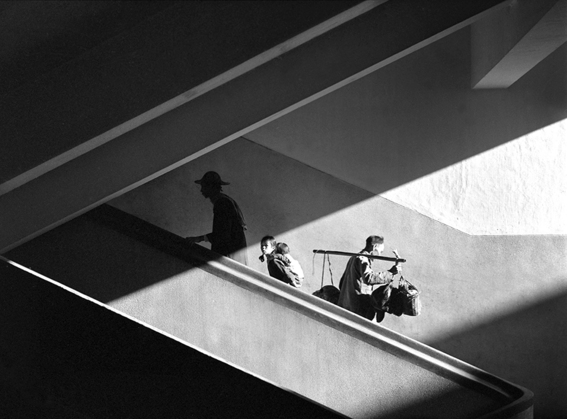
R
E
V N
E
X
T
Iconic Hong Kong photographer and filmmaker Ho Fan passed away on June 19 in San Jose, California. He was 85 years old. Since he began his career in 1956, Ho had received more than 280 photography awards and directed 27 films. He is best known for his street photography of Hong Kong during the 1950s and ’60s, in which he captured quintessential scenes of the city through striking black-and-white images.
Although he was born in Shanghai, Ho Fan and his family immigrated to Hong Kong in the late 1940s when he was a teenager. Ho began photographing at the age of 14, after receiving a twin-lens Rolleiflex camera from his father. Mostly self-taught, Ho began photographing the street-life of Hong Kong, becoming particularly fascinated with what would become his all-time favorite place to shoot—the city’s Central district.
Ho’s works are renowned for their distinctive, dramatic style. His photographs are striking and dynamic, as Ho paid particular attention to composition, line and geometric shape. Ho also placed absolute importance on shadow and light, creating compelling photojournalistic images of Hong Kong that often utilized harsh light to draw focus to their subjects. His photographs exude a sense of vintage timelessness, revealing the serene nature of Hong Kong during its development in the 1950s.
Ho’s growth as an artist has been exponential, and his work is now widely recognized. However, Ho started off at meager beginnings, developing his images in the family bathtub as he documented the street life of Hong Kong. Arguably his most famous photograph, Approaching Shadow (taken at Queen’s College, Causeway Bay, in 1954), sold for HKD 375,000 (USD 48,000), and he was named one of the Top Ten Photographers of the World by the Photographic Society of America for a total of eight times. Seeing Ho’s work for the first time in 2006, gallery owner Laurence Miller commented that “[t]hey felt like direct descendants of the Bauhaus, yet they were made in Hong Kong. They were abstract and humanistic at the same time.”
During the early 1960s, Ho decided to pursue his passion in acting, joining the renowned Shaw Brothers Studio in 1961 and featuring in a number of different productions such as Love Without End (1961) and The Blue and the Black (1966). Leaving Shaw Brothers Studio in 1969, Ho went on to become a celebrated and acclaimed filmmaker himself, directing over 20 films in both Taiwan and Hong Kong. His films were featured in various festivals around the world, including in Cannes and Brisbane, among others. When asked about the relevance of filmmaking to his past career in photography, he said, “Photography and filmmaking are like sisters. One is still and one is moving—that is the only difference.”
Although Ho has passed, his work continues to live on. His films are an endless source of entertainment and interest, and his short career in acting has been notable. However, it is his photography that has arguably left the biggest impact. His works provide unique insight into 1950s Hong Kong, when it was in the midst of transitioning from a quiet, traditional area to the bustling metropolis that it is today.




